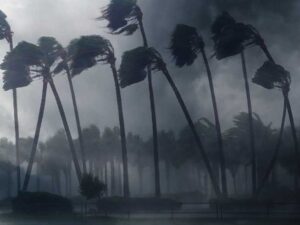As with each year, we hope for a season with no hurricanes coming our way. However, it is safe to expect that there may be at least one such event in the coming months and, at the start of the hurricane season, it is prudent to plan for that possibility. Some of the planning steps that should be considered include the following:
- Create a disaster plan and establish off-site contact information and meeting points.
- Establish evacuation routes and conduct building or community evacuation drills in the weeks leading up to and once the hurricane season has begun.
- Verify that emergency generators and supplies operate and that fuel, flashlights, batteries, water, and other necessities are available.
- Backup computer files and store information offsite, in case computers crash or systems fail.
- Secure the premises. Make preparations for routine lockdown of the building(s) or other facilities as a storm approaches, so the building(s) is(are) secure during the storm and safe from vandalism or looting if a hurricane strikes.
- Write a list of owners and employees. Have on hand a current, hard-copy reference list complete with the names of all property owners, emergency contact numbers, and details of second residence addresses, as well as a list of all association employees, with full contact details.
- Photograph or video the premises. Keep a visual record through video or photographs of premises, facilities, and buildings to facilitate damage assessment and speed damage claims in a storm aftermath. Consider having the premises evaluated by appropriate professionals to establish the conditions prior to any hurricane event. (see further details on this item below)
- Make a building and facilities plans. Make sure a complete set of building or community plans are readily available for consultation by first responders, utilities workers, and insurance adjusters following a storm.
- Check all insurance policies and agent details. Be sure all insurance policies are current and coverage is adequate for community property, facilities, and common areas and compliant with State Law; full contact details for insurance companies and agents should be readily available in the event of a storm.
- Maintain bank account details and signatories. Keep handy a list of all bank account numbers, branch locations, and authorized association signatories, and make contingency plans for back-up signatories in case evacuation or relocation becomes necessary.
- Prepare to mitigate damages. In the immediate aftermath of a storm, take the necessary steps to mitigate damages. This includes “drying-in,” which is the placement of tarps on openings in the roof and plywood over blown out doors and windows, and “drying-out,” which is the removal of wet carpet and drywall to prevent the growth of mold.
- Remove debris.Have a plan for the speedy removal of debris by maintenance staff, outside contractors, or civic public works employees should a hurricane topple trees and leave debris in its wake.
- Reach out to your professionals. Be in touch with your management team and legal counsel to assist in guiding you in making fully informed business decisions to best protect your Community

